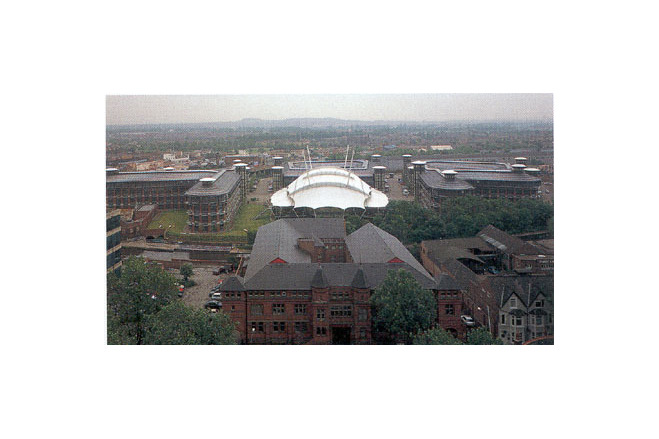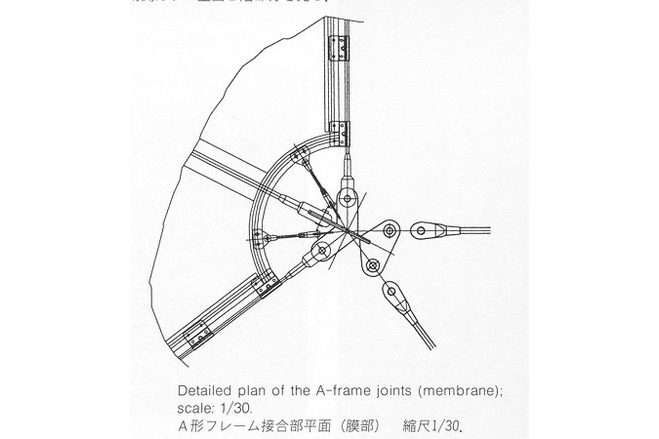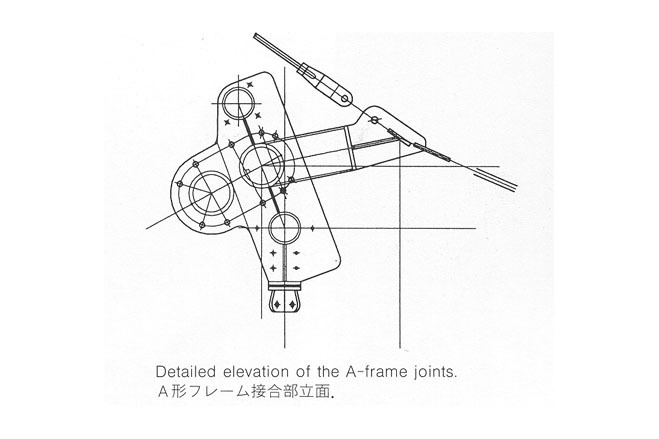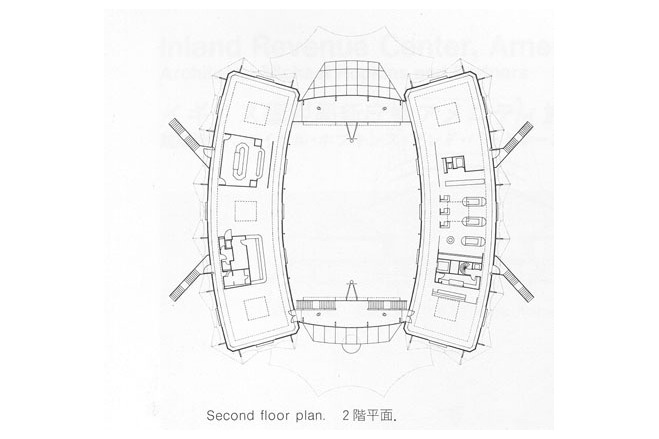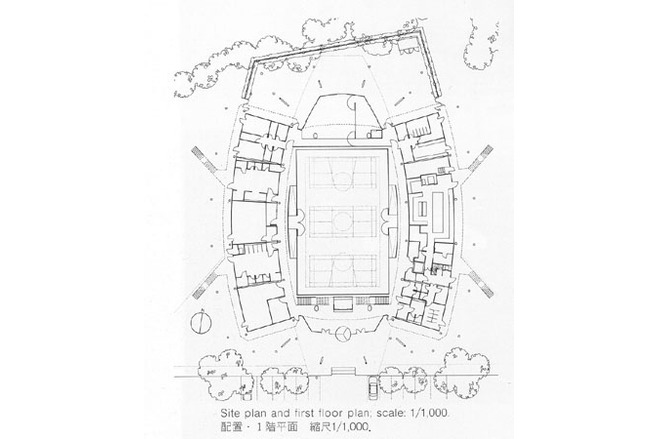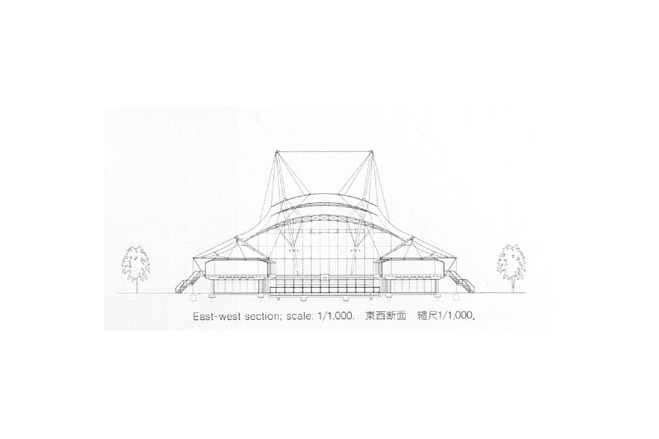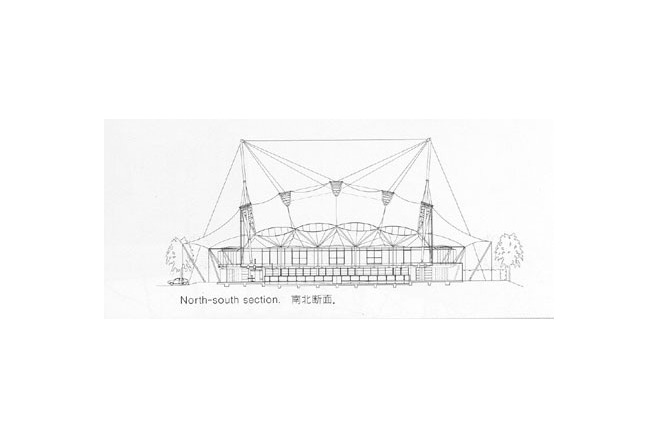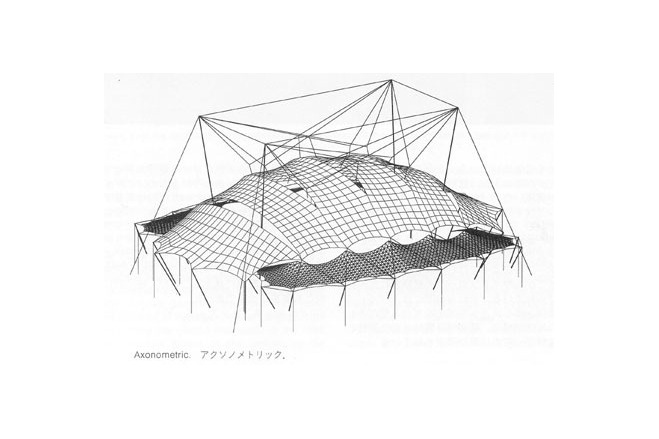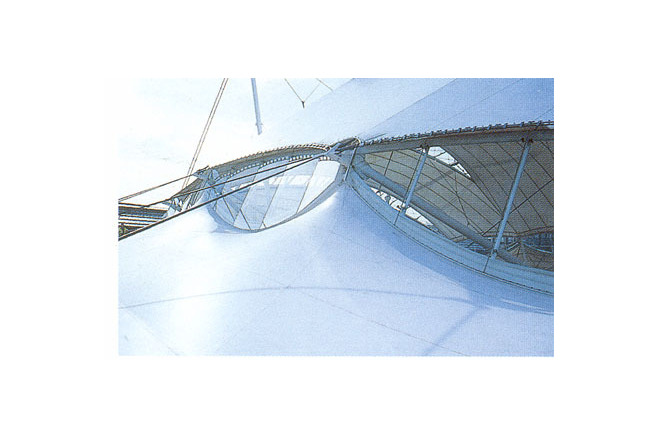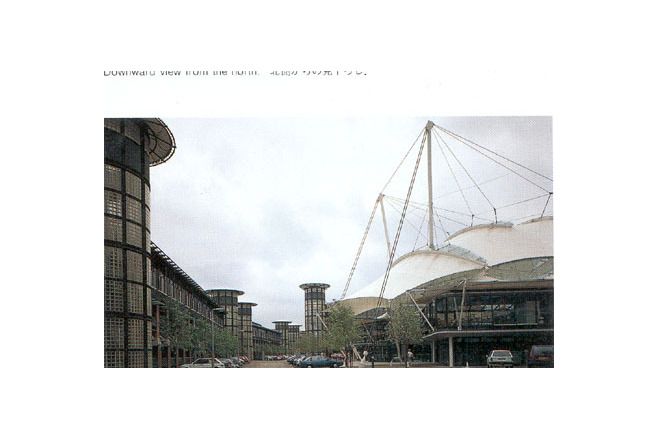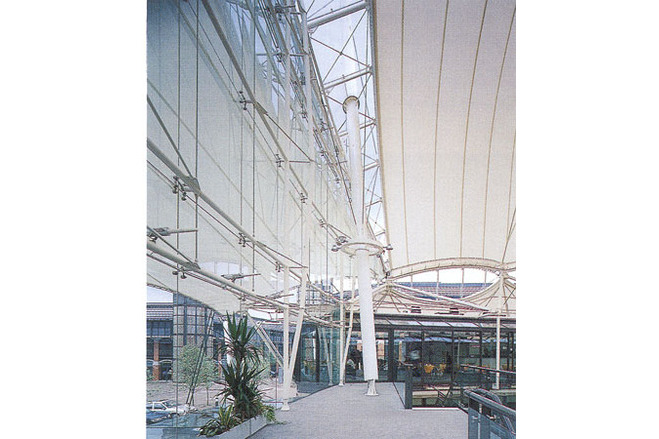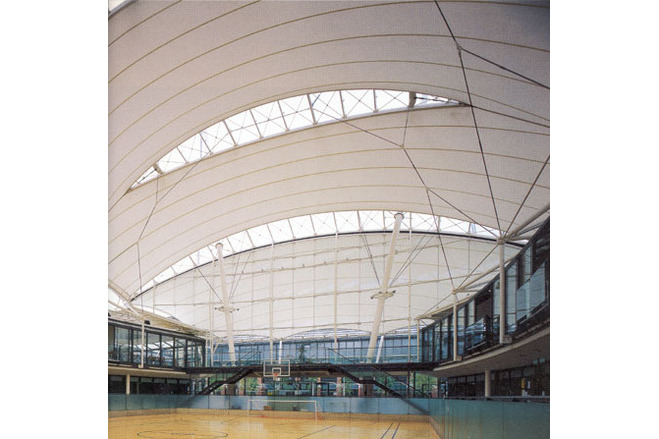Amenities Building of the Inland Revenue Centre
General information
-
Location address
Nottingham
-
Location country
United Kingdom
-
Year of construction
1994
-
Name of the client/building owner
The Inland Revenue
-
Function of building
Hybrid buildings
-
Degree of enclosure
Fully enclosed structure
-
Climatic zone
Temperate - cold winters and mild summers
-
Number of layers
mono-layer
Description
For the amenity building at the inland Revenue Center in Nottingham, 1994, we seperated the PTFE membrane over the sports hall from the two outside blocks enclosing the restaurant and crèche. This discontinuity not only emphasizes the difference in activities beneath, but breaks up the bulk of the roof. By allowing another scalloped and undulating fabric edge to appear, the thinness and lightness of the membrane becomes apparent and the opportunity for a clerestory is provided. The glazed elliptical ladder trusses generate the main roof form, solve the location of mast penetration, and provide a way of joining the glazed end walls to the roof. They also capture slivers of sky, enhancing the marvelous combination of diffused and direct light.
The ladder trusses are suspended by steel bars from four masts. The edges of the roof are pushed out by raking struts at the canopy ends and by raking A-frames are attached to the ladders by cables and from them are suspended the insulating ceilings of the side blocks. Between them span glazed lenses forming the upper boundary of the side block roofs, while the outer edges of these roofs are held in position by props and raking struts and tied down to piled foundations.
The details at the ends of the A-frames where upper and lower membranes, glazed lenses and cables come together were particularly difficult to design. The forces were substantial, the geometry complicated while the membrane attachement imposed its own requirements. This situation was compounded where the glazed end wall and associated ladder trusses were also part of the assembly. It is a significant engineering and architectural achievement that these details appear as clear as their simpler counterparts.
(Micheal Hopkins and Partners)
The building takes the form of two double story blocks flanking a central sports area, the ends of which are closed by full height glazed walls. The roof is a PTFE coated glass fiber membrane. There is some similarity with the earlier building for Schlumberger Research Center in Cambridge. However, here the side blocks are each covered with a membrane roof and the membrane edges on all three roofs have edges cables rather than straight edges clamped directly to a framework.
The form of the main roof is generated by 6 elliptical ladder trusses suspended by steel rods from 4 masts 28m high.
The edges of the roof are pushed out by raking struts and tied down at the entrance canopy ends, and by raking A-frames along the edges of th side blocks. The points of the A-frame are attached to the 3 suspended ladder trusses by ridge cables. Spanning longitudinally between the A-frames are glazed lens-shaped trusses which form the enclosure between the main roof and side block roofs. The connection details at the points where upper and lower membranes, glazed trusses and the ridge cables come together were difficult to solve because of the geometry and size of forces involved.
The membrane provides very little insulation and so the sports hall was considered as an unheated space. Temperatures are predicted to follow outside conditions within a few degrees. Opening vents in the glazed ens walls provide cross-ventilation on hot days, whilst electric radiant heaters on the internal walls raise the temperature to 13° in cold periods.
The translucency of the membrane roof gives a very positive benefit. Not only does the light have an attractive quality, the use of electric lighting is greatly reduced - so much so that less energy is used than in a conventional building.
(Brian Forster, Ove Arup & Partners)
[Membrane Designs and Structures in the World, Kazuo Ishii, p110-113]
Description of the environmental conditions
General comments, links
Inland Revenue Center, Amenity Building
Amenities Building of the Inland Revenue Centre, Nottingham, Great Britain
Neuf/Nieuw
Administration Building in Nottingham
Architecture and Urbanisme (AU) 10/1995
Hopkins, the work of Michael Hopkins & Partners
Mehrzweckhalle in Nottingham
Material of the cover
-
Cable-net/Fabric/Hybrid/Foil
Cable
-
Material Fabric/Foil
Fiberglass
-
Material coating
PTFE
Main dimensions and form
-
Covered surface (m2)
3000
Duration of use
-
Temporary or permanent structure
Temporary
-
Convertible or mobile
Convertible
-
Design lifespan in years
31-..
Involved companies
-
Architects
Michael Hopkins & Partners
-
Contractors
Editor
-
Editor
Marijke M. Mollaert


